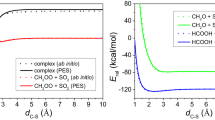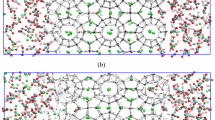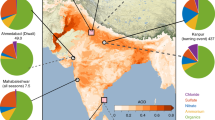Abstract
THE available biological and chemical evidence indicates that the effective germicidal life of aerosols containing sodium hypochlorite depends on the velocity of changes occurring between the collisions of carbon dioxide molecules in the air with droplets of the aerosol, and the appearance of the corresponding hydrogen ions. One of the changes concerned, namely the hydration of the dissolved gas, has been shown by McBain1 to be a measurably slow reaction, and it is therefore of interest to determine the effect of the salts normally present, and of other substances, upon it.
This is a preview of subscription content, access via your institution
Access options
Subscribe to this journal
Receive 51 print issues and online access
$199.00 per year
only $3.90 per issue
Buy this article
- Purchase on SpringerLink
- Instant access to full article PDF
Prices may be subject to local taxes which are calculated during checkout
Similar content being viewed by others
References
McBain, J. W., J. Chem. Soc. (Trans.), 101, 814 (1912).
Thiel, A., and Strohecker, R., Ber. deutsch. chem. Ges., 47, 1061 (1914).
Finn, S. R., and Powell, E. O., NATURE, 144, 864 (1939).
Killeffer, D. H., Indus. Eng. Chem. (Indus. Edn.), 29, 1293 (1937).
Finn, S. R., and Baker, A. H., Private communication.
Author information
Authors and Affiliations
Rights and permissions
About this article
Cite this article
POWELL, E. Velocity of Hydration of Carbon Dioxide in the Presence of Extraneous Substances. Nature 146, 401 (1940). https://doi.org/10.1038/146401c0
Issue date:
DOI: https://doi.org/10.1038/146401c0



